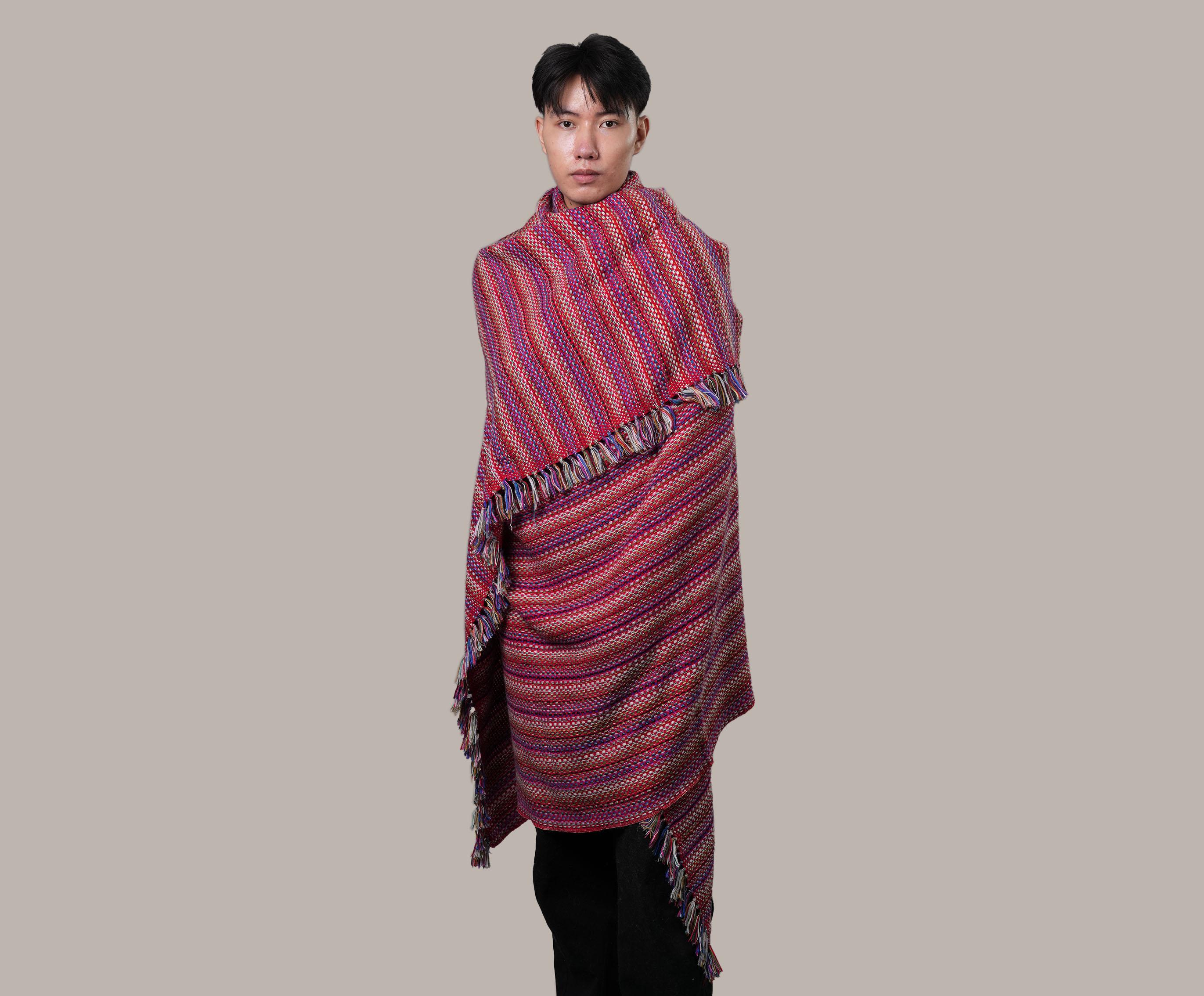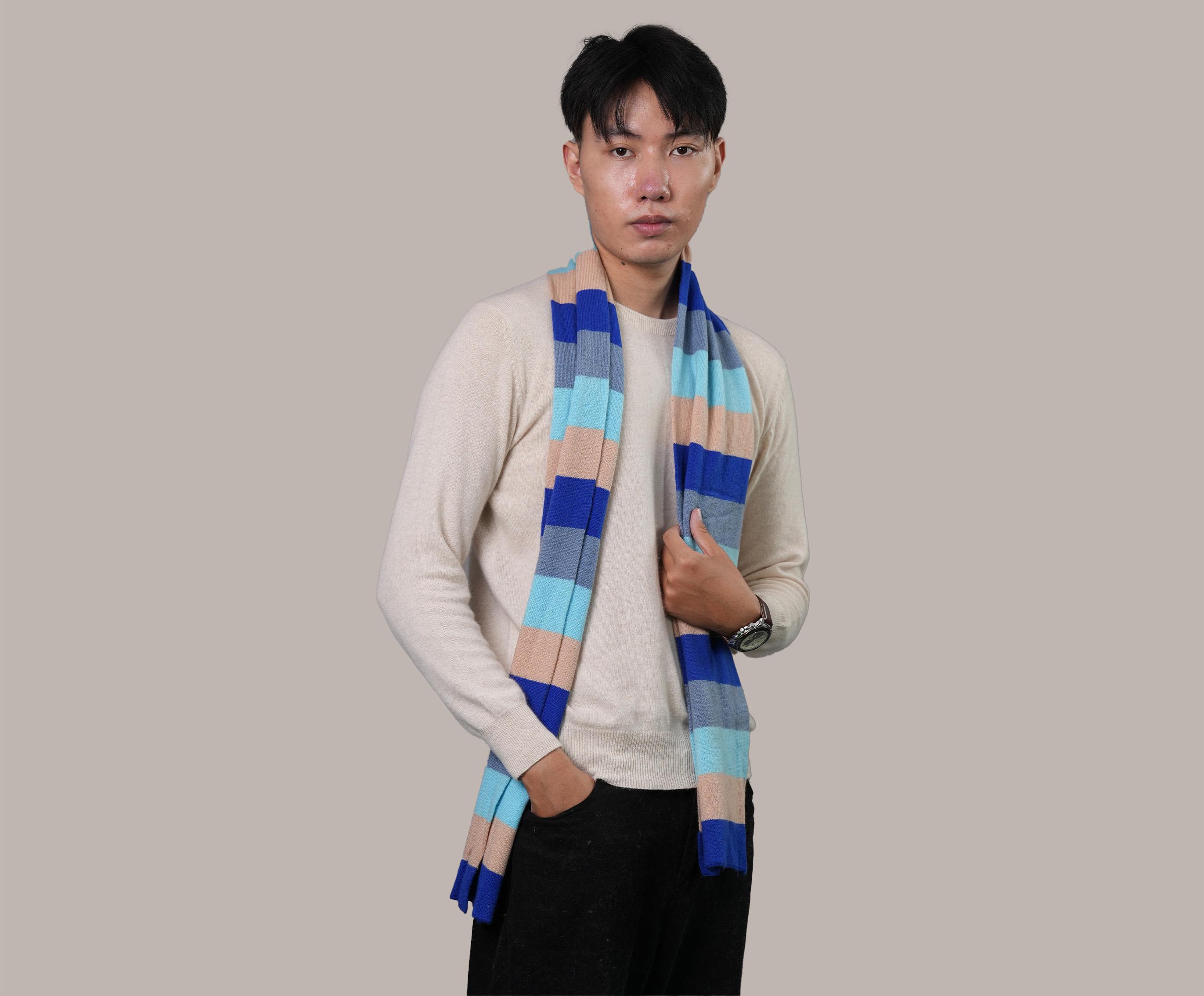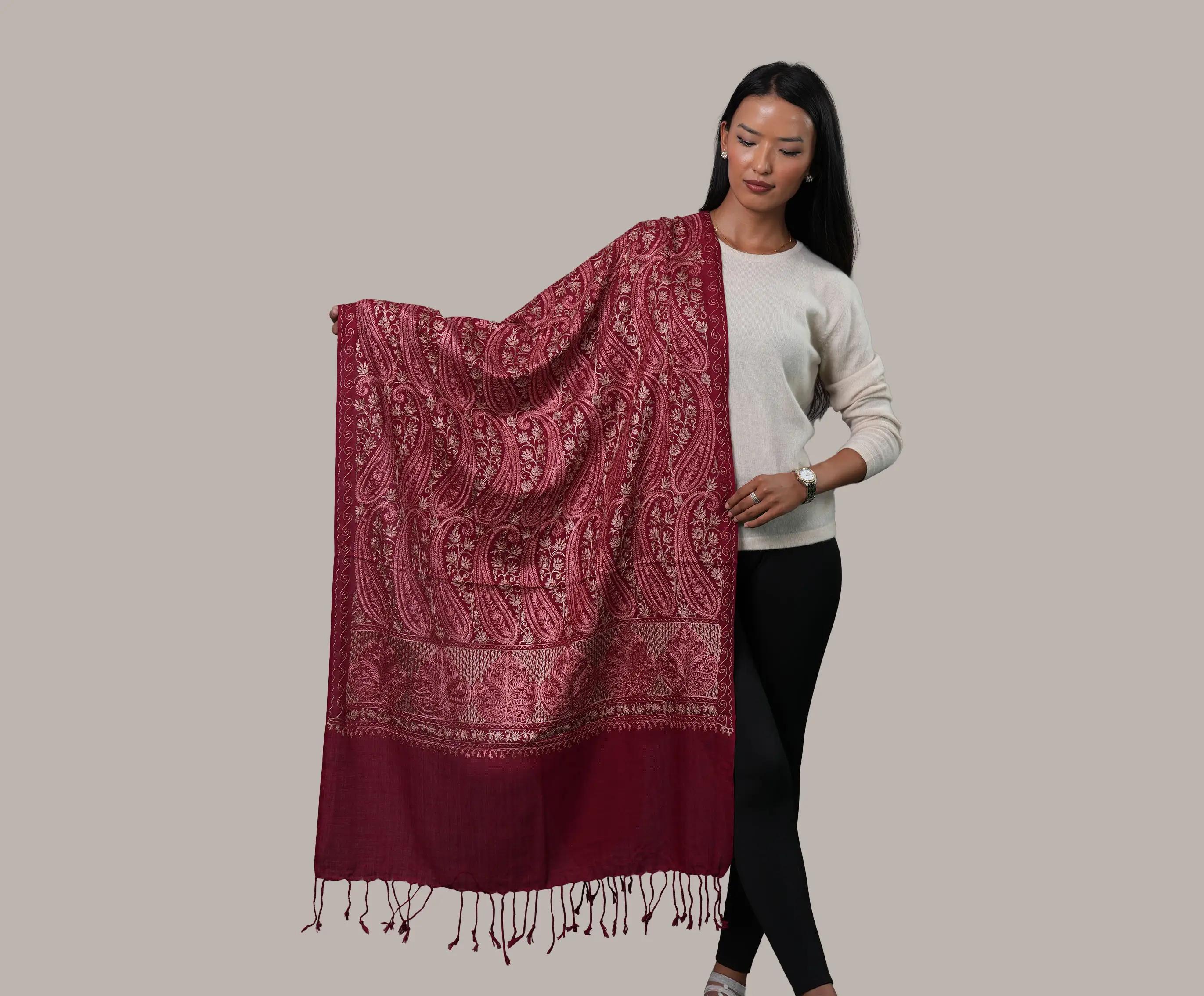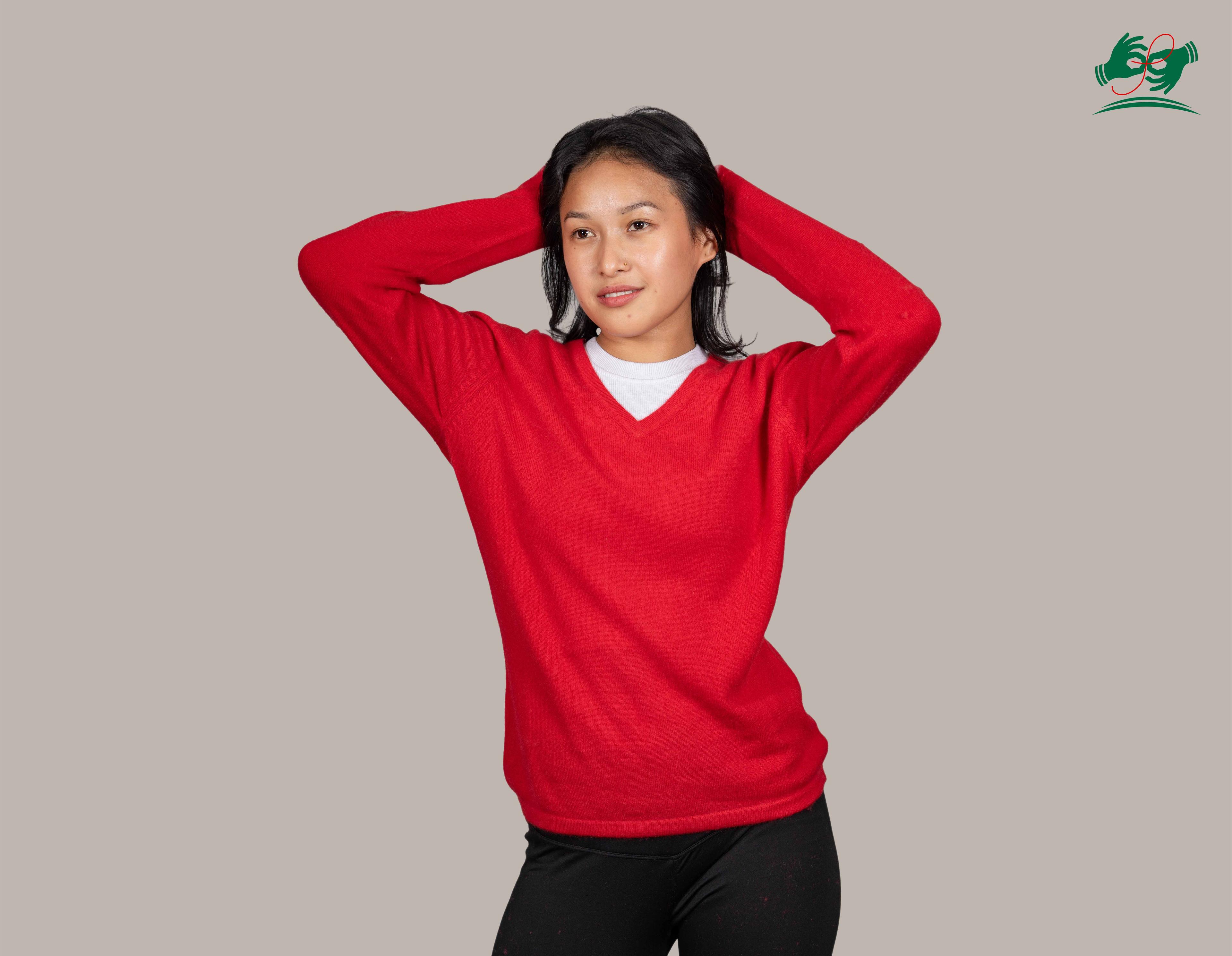Cashmere Price Range: Why Costs Vary & How to Choose
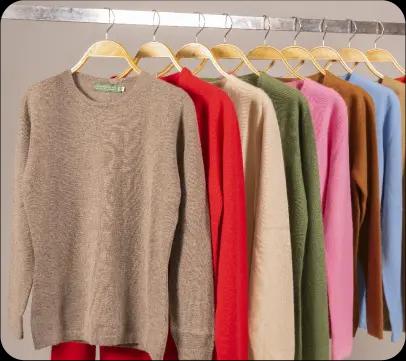
Cashmere is the pinnacle of luxury and comfort, but its price tag can be confusing. Why does a cashmere sweater cost $60 at one store and $400 at another?
The answer lies in understanding the origin of cashmere, its quality, sourcing, and craftsmanship. Knowing these differences can save you hundreds while ensuring you get the best value for your investment.
What Drives Cashmere Prices?
Fiber Diameter & Micron Count - The Foundation of Quality
The fineness of cashmere fibers directly impacts both price and performance. Here's how micron count translates to your wallet:
| Grade | Micron Range | Feel & Performance | Price Impact |
| Grade A | Under 15 µm | Ultra-soft, silk-like texture | Premium(+100 - 150%) |
| Grade B | 15.6 - 19.0 µm | Excellent softness, durable | Premium & Affordable |
| Grade C | 19.1 - 30.0 µm | Soft and durable than fast fashion | Affordable, but Pure Cashmere |
Yes Helping Hand Advantage: We source 100% pure cashmere in the Grade A, B, and C range, offering exceptional quality at accessible prices through direct partnerships and social impact sourcing. So, everyone can afford and feel the softness of 100% pure cashmere clothing.
Source & Altitude: Geography Matters
Why Himalayan cashmere costs more than Mongolian cashmere:
- Himalayan goats (>3,000m elevation):
- Mongolian goats (~2,000m elevation):
The elevation effect: Every 1,000m increase in altitude reduces fiber diameter by ~0.7 µm, directly boosting market price.
The Scarcity Factor: Annual Yield per Goat
Here's why cashmere will always command premium pricing:
| Material | Annual Yield | Sweaters per Animal | Relative Scarcity |
| Cashmere | 200-250g | 1 sweater = 4-6 goats | Ultra-rare |
| Sheep Wool | 2-8kg | 1 sweater = 1 sheep | Abundant |
Machine-made vs Hand-made production difference:
The choice between machine and handmade cashmere production creates a fundamental difference in pricing, garment quality, and longevity.
The processing method dramatically affects both price and longevity:
Hand-Combing Benefits:
- Only 2-4% fiber breakage (vs. 8-12% machine processing)
- Preserves natural fiber strength and softness
- 15-20 days artisanal care per garment
- Costs 40-60% more than machine processing
Machine Processing Trade-offs:
- Faster production (1-2 days vs. 15-20 days)
- Lower initial cost
- Higher fiber damage reduces durability
- Compromised texture and feel
The undercoat of cashmere goats yields a fine, silky wool known as cashmere. It takes a lot of work to gather the fibres from the goats since they need to be meticulously combed. This adds to the fibres' uniqueness and helps explain the expensive price.
Check out our cashmere collection:
Additional Factors that affect Cashmere Price
1. Ply/Gauge Variations
| Ply Type | Construction | Price Impact | Durability | Best For |
| Single-Ply | One yarn strand | Budget-friendly (-20-30%) | Lower | Lightweight scarves |
| 2-Ply | Two strands twisted | Standard pricing | High | Most sweaters/cardigans |
| 3-Ply+ | Multiple strands | Premium (+25-40%) | Highest | Coats, heavy sweaters |
Key Points:
Single-ply feels lighter but less durable
→ 2-ply offers the best balance of warmth and longevity
→ 3-ply+ creates heavier, more expensive garments
→ Higher ply count = more cashmere fiber used = higher cost
2. Yarn Preparation Methods
| Method | Process | Fiber Damage | Price Impact | Final Quality |
| Carded | Mechanical brushing | Higher (5-8%) | Lower cost (-15-25%) | Good softness |
| Combed | Hand/precision combing | Minimal (1-3%) | Higher cost (+15-25%) | Superior softness |
Processing Details:
→ Carded cashmere: Faster, machine-driven process with some fiber breakage
→ Combed cashmere: Slower, careful alignment preserves fiber integrity
→ Combed advantage: Longer-lasting softness, reduced pilling
→ Price justification: Extra labor time and reduced yield drive up costs
3. Weave Density Variations
| Density Level | Gauge Count | Cashmere Used | Price Range | Characteristics |
| Loose Knit | 3-5 gauge | Less fiber | Budget ($40-80) | Lightweight, drapey |
| Medium Knit | 7-12 gauge | Standard amount | Mid-range ($80-150) | Balanced warmth/weight |
| Tight Knit | 14+ gauge | More fiber | Premium ($150-300+) | Dense, very warm |
Density Impact:
→ Tighter weaves require 20-40% more cashmere fiber
→ Dense construction = better shape retention
→ Loose knits = more affordable but less durable
→ Gauge count directly correlates with final garment cost
4. Brand Overhead & Retail Markup
| Cost Component | Percentage of Final Price | Example on $200 Sweater |
| Raw Cashmere | 25-35% | $50-70 |
| Manufacturing | 15-25% | $30-50 |
| Brand Operations | 15-25% | $30-50 |
| Retail Store Markup | 50-100% | $100-200 |
5. Seasonal & Fashion Factors
| Factor | Price Variation | Peak Seasons | Impact Duration |
| Fashion trends | ±20-30% | Fall/Winter launch | 1-2 seasons |
| Seasonal demand | ±15-25% | Oct-Feb | 4-5 months |
| Color popularity | ±10-15% | Varies by trend | 6-12 months |
| Style complexity | ±25-50% | Year-round | Permanent |
Seasonal Pricing Patterns:
- Fall/Winter: Peak pricing due to high demand
- Spring/Summer: 20-40% discounts on previous season stock
- Trending colors: Command 10-15% premium during peak popularity
- Classic neutrals: Maintain steady pricing year-round
- Complex designs: Cable knits, patterns add 25-50% to base price
- Limited editions: 30-100% premium for exclusivity
Identifying Pure Cashmere
Our products are made from pure cashmere.
We are transparent, but most luxury fashion brands aren't. So, here's your quality checklist:
- Social impact: Look for brands supporting inclusive employment, we do.
- Feel: Should be soft and warm, not slick or itchy
- Label: Must say "100% Cashmere" - ours does
- Micron count: 15.6-19 µm for 100% pure cashmere quality
- Fiber length: ≥36mm for durability
- Hand-feel test: Should feel noticeably softer than synthetic
- Pilling behavior: Initial pilling stops after 3-7 wears
- Color consistency: Even dye distribution, no blotchiness
- Brand transparency: Look for brands that share their story and mission; we do.
- Social impact: Look for brands supporting inclusive employment, we do.
Our Cashmere Ponchos are crafted with the same attention to quality, transparency, and ethical practices highlighted in our checklist.
Answers for FAQs on Cashmere Pricing:
Is 100% cashmere always worth the price?
Yes, when you buy quality cashmere from ethical sources. Look for Grade A or B cashmere (15-19 microns) from reputable brands. Avoid cashmere under $40 as it's likely low-quality or blended. Yes Helping Hands' 100% pure cashmere at $60-100 offers genuine luxury without the markup.
Why are some cashmere blankets more expensive than sweaters?
Blankets require 25-50% more cashmere fiber. A sweater uses fiber from 3-4 goats, while a blanket needs 4-6 goats' worth. Plus, blankets use heavier ply construction for durability and have a larger surface area, driving up material costs.
How much should I budget for quality cashmere?
Quick Budget guide:
- Scarves: $50-80
- Sweaters: $80-150
- Blankets: $120-200
- Premium pieces: $150-250
For ethical options with social impact, expect to pay 20-30% less than luxury brands while getting the same quality.
Check out the cashmere collection under $100 at Yes Helping Hand.
Why is your cashmere more affordable?
Yes Helping Hands eliminates middleman markups and luxury brand overhead. Direct sourcing from Nepal saves 30-40%, and we use Grade B cashmere (still premium quality) instead of Grade A. Yes Helping Hands' profits support our mission, not expensive marketing campaigns.
How do I care for cashmere to make it last?
Follow these 4 steps:
- Hand wash in cold water with wool detergent
- Never wring or twist - gently squeeze out water
- Lay flat on towel to dry, reshape while damp
- Store folded in breathable containers, never hanging
Proper care extends cashmere life to 10+ years.
How can I tell if cashmere is genuine?
Check these 5 indicators:
- Label must say "100% Cashmere" (not "cashmere blend")
- Feel test: Should be soft but not slippery like synthetic
- Price check: Real cashmere under $40 is suspicious
- Burn test: Real cashmere smells like burning hair, not plastic
- Brand transparency: Legitimate brands share sourcing details
What's the difference between Grade A, B, and C cashmere?
Grade breakdown:
- Grade A (under 15 microns): Ultra-premium, silky feel, most expensive
- Grade B (15-19 microns): Excellent quality, best value, Yes Helping Hands' standard
- Grade C (19+ microns): Good quality, budget-friendly, still genuine cashmere
Grade B offers 90% of Grade A's luxury at 60% of the price.
Is cashmere warmer than wool?
Yes, cashmere is 8x warmer than sheep wool due to finer fibers that trap more air. A lightweight cashmere sweater provides the same warmth as a heavy wool sweater, making it ideal for layering and travel.
Why does cashmere pill initially?
New cashmere naturally pills for the first 3-7 wears as loose fibers work their way out. This is normal and actually indicates quality - synthetic materials don't pill the same way. After initial pilling stops, quality cashmere becomes smoother and softer.
Yes Helping Hand: Luxury with a Conscience
Experience the softness of 100% Pure Himalayan Cashmere from Nepal at a fraction of the cost of major brands. You no longer have to choose between luxury quality, an accessible price, and your principles. With our collection of cashmere sweater collections, you get all three.
Our Social Impact Advantage:Why our ethical cashmere delivers exceptional value:
- The Quality: 100% Pure Cashmere from modern, efficient production.
- The Value: Direct sourcing eliminates middleman markups, saving you 20-35% and delivering budget-friendly prices.
- The Principle: Every purchase supports fair employment and creates opportunities for skilled artisans with disabilities and single mothers, empowering livelihoods and independence.
Our Unique Position: Direct sourcing + social impact = genuine 100% cashmere at blend prices.
You aren't just buying a sweater; you are becoming part of Yes Helping Hand story.

